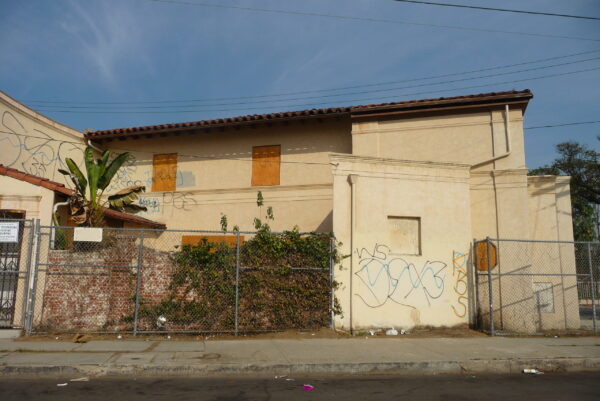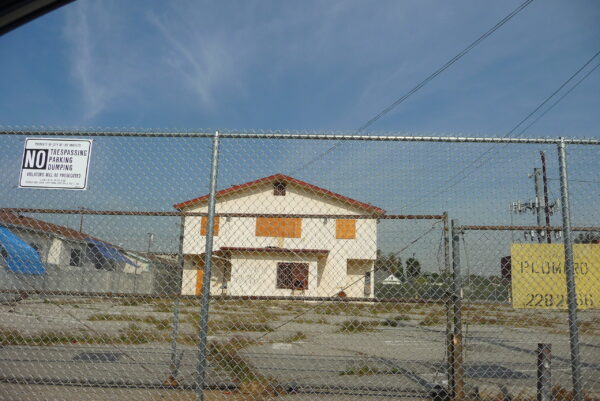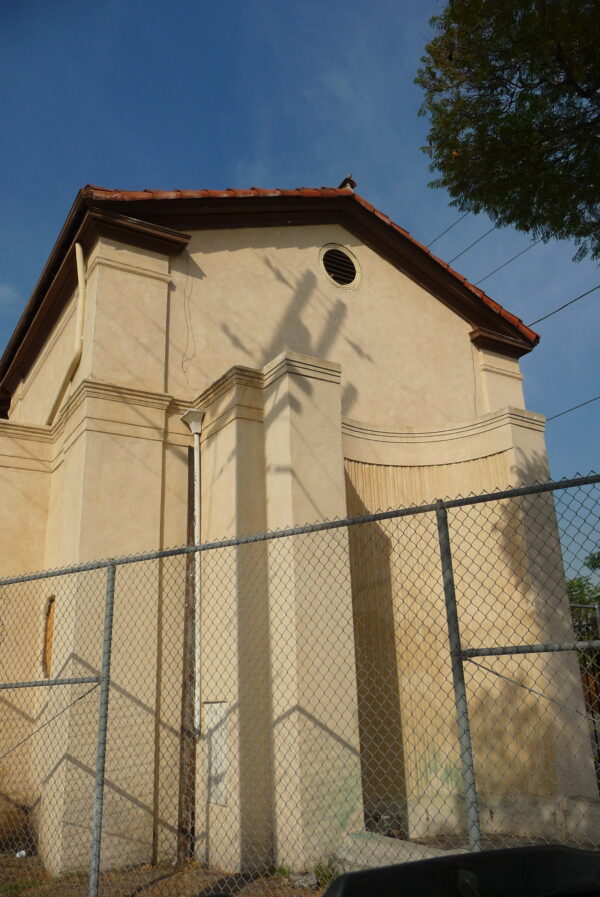
Place
Angelus Funeral Home/Paul R. Williams Apartments
Designed by Paul R. Williams, this 1932 funeral home was thoughtfully rehabilitated into management offices and living spaces for a new affordable housing apartment complex


Place Details
Address
Architect
Year
Property Type
Attributes
The Angelus Funeral Home, situated on a triangular lot in Los Angeles, embodies architectural elegance and profound historical significance. Completed in 1934, this striking two-story structure showcases the Spanish Colonial Revival style with Art Deco and Georgian Revival elements. Its distinctive features, such as the red clay tile roof and the grand front-facing gable, illustrate the architectural prowess of its era.
Initially founded in 1922, the Angelus Funeral Home played a crucial role in providing services to the African American community during a time of widespread racial exclusion. It is a significant example of a successful commercial enterprise established by African Americans. Faced with widespread racial prejudice that excluded them from many sectors of the economy, African Americans were compelled to create their own businesses to meet community needs.
Despite early competition within the community, the funeral home was sold and came under the leadership of new owners, including Louis George Robinson, Lorenzo Bowdoin, and John L. Hill. Hill eventually assumed full ownership, transforming it into one of the most successful and prominent black-owned businesses in Los Angeles. In 1942, John L. Hill Jr. became president upon his father’s death. He was also the first African American to serve on the California State Board of Funeral Directors and Embalmers, a position he held for 20 years. Hill’s foresight led him to move the business from Jefferson Boulevard to Crenshaw Avenue in 1951 to better serve the westward-moving clientele.
The building was designed by Paul R. Williams, one of the most influential African American architects of the 20th century. Known for his work on significant residential and commercial projects, Williams’ design of the Angelus Funeral Home remains a standout example of his talent.
Today, the original Angelus Funeral Home building has been adaptively reused and now functions as apartments, continuing to contribute to the community while preserving its historical and architectural legacy.
Angelus Funeral Home/Paul R. Williams Apartments earned a 2021 Preservation Award














